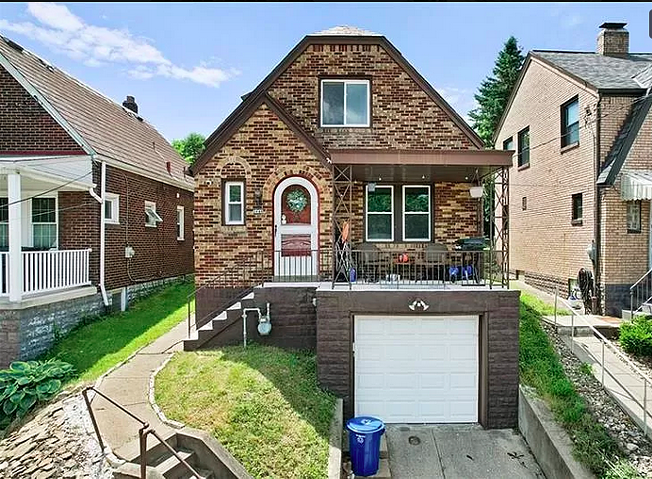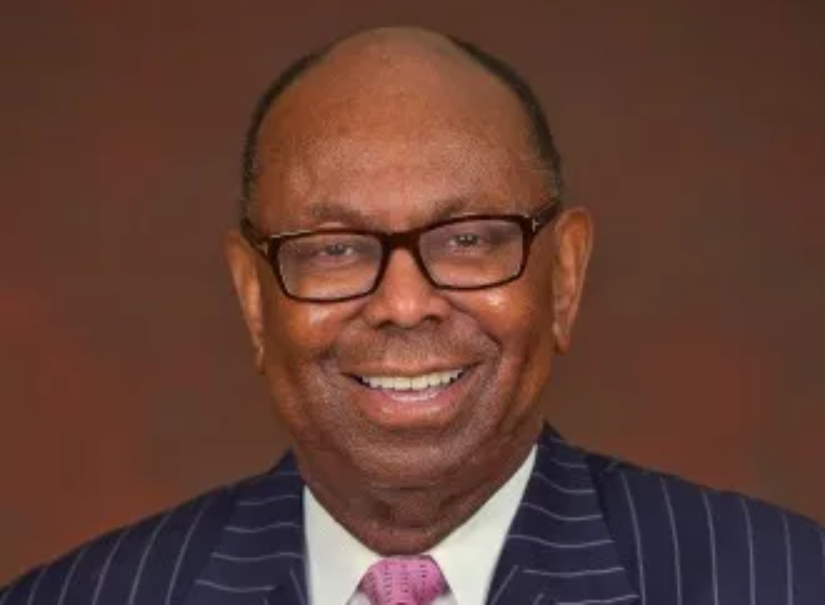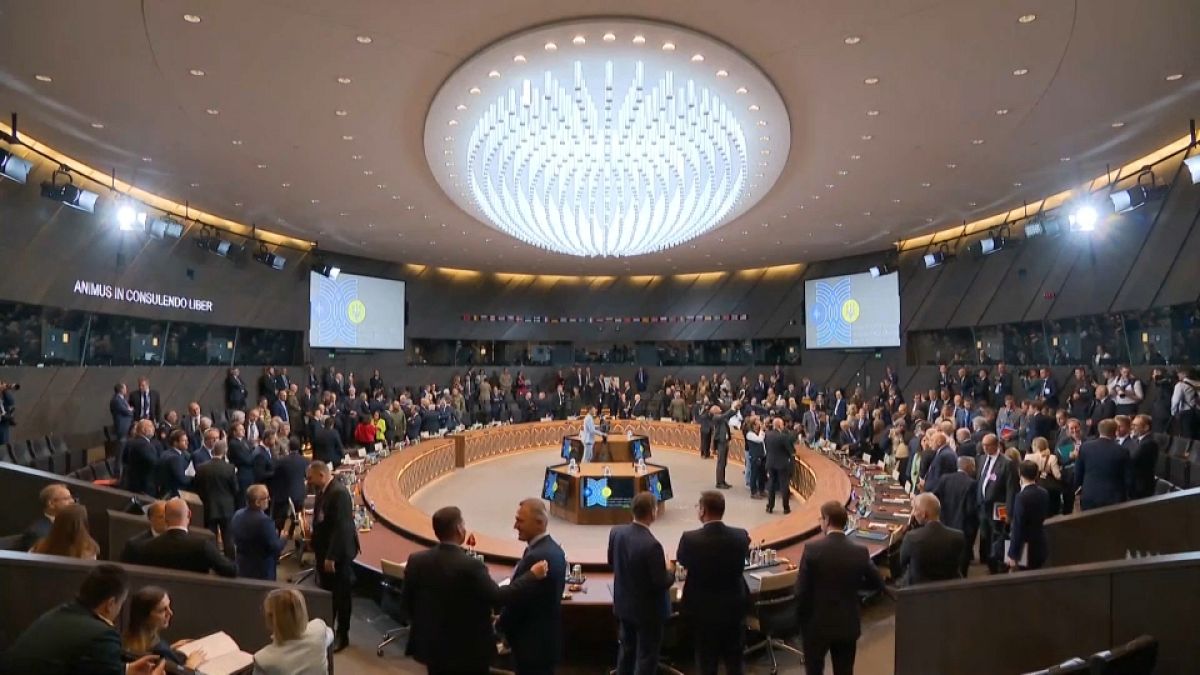Atlanta, GA
Atlanta Police: man breaks into Midtown home while woman is sleeping

ATLANTA, Ga. (Atlanta News First) – A Midtown woman woke up to the sound of someone busting down her back door early Tuesday morning.
According to an Atlanta Police report, the woman ran out her front door and flagged down a neighbor for help near Piedmont Avenue. That person called 911.
When police arrived, they checked the woman’s home and saw a man inside the house through a window. In body camera footage you can hear the man tell police it’s his house.
Police instructed the intruder to come outside. After a few minutes he opened the front door and was placed in handcuffs. Police say the man was 38-year-old Aleavy Glover.
Glover was charged with burglary and criminal damage to property.
According to the police report, a routine check for outstanding warrants revealed that Glover was also wanted for probation violation and possession of methamphetamine.
In the same report, officers say Glover was likely homeless at the time of his arrest.
“Crime is an issue city-wide and as a city-wide member of the Atlanta City Council it certainly is a major challenge for us given the economic situation. But I think it’s also important to highlight that we have challenges surrounding affordable housing,” Atlanta City Councilwoman Keisha Waites said.
Waites acknowledges that there is a growing homeless population in Atlanta but says that’s no excuse for anyone to break the law. She says Mayor and Council have been working to create more affordable housing options, but she also thinks the city should focus on providing more mental health resources.
“There’s nothing more important no matter where you live. Whether its Buckhead or Bankhead, if you don’t feel safe nothing else matters,” Waites said. “I hate when we hear about these situations. But I am grateful that we have a situation where there was not a loss of life.”
Copyright 2024 WANF. All rights reserved.

Atlanta, GA
U.S. cities are using shipping containers to build gated micro-communities for homeless people
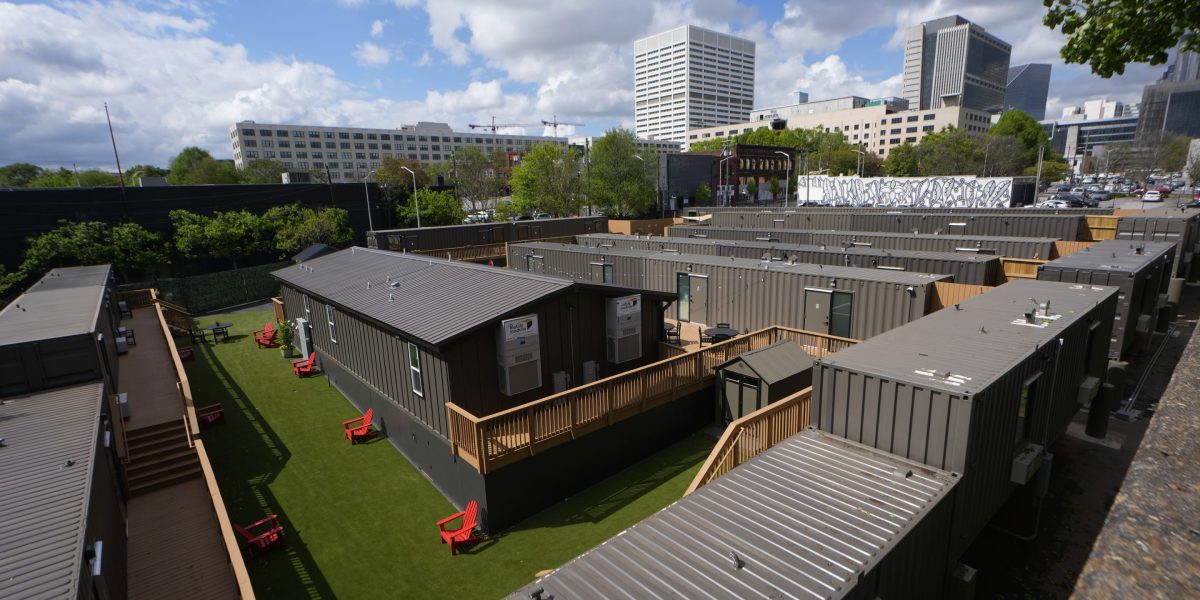
In a dreary part of downtown Atlanta, shipping containers have been transformed into an oasis for dozens of previously unsheltered people who now proudly call a former parking lot home.
The gated micro community known as “The Melody” doesn’t look like a parking lot anymore. Artificial turf is spread across the asphalt. Potted plants and red Adirondack chairs abound. There’s even a dog park.
The shipping containers have been divided into 40 insulated studio apartments that include a single bed, HVAC unit, desk, microwave, small refrigerator, TV, sink and bathroom. On a recent afternoon, a half-dozen residents were chatting around a table in The Melody’s smoking area.
“I’m just so grateful,” said Cynthia Diamond, a 61-year-old former line cook who uses a wheelchair and used to be chronically homeless. “I have my own door key. I ain’t got to worry about nobody knocking on my door, telling me when to eat, sleep or do anything. I’m going to stay here as long as the Lord allows me to stay here.”
Faced with years of rising homelessness rates and failed solutions, city officials across the U.S. have been embracing rapid housing options emphasizing three factors: small, quick and cheap. Officials believe micro communities, unlike shelters, offer stability that, when combined with wraparound services, can more effectively put residents on the path to secure housing.
Denver has opened three micro communities and converted another five hotels for people who used to be homeless. In Austin, Texas, there are three villages of “tiny homes.” In Los Angeles, a 232-unit complex features two three-floor buildings of stacked shipping containers.
“Housing is a ladder. You start with the very first rung. Folks that are literally sleeping on the ground aren’t even on the first rung,” said Denver Mayor Mike Johnston, sitting in one of the city’s new micro communities that offer tiny, transitional homes for that first rung.
More than 1,500 people have been moved indoors through the program, with over 80% still in the housing as of last month, according to city data. The inexpensive units are particularly a boon for cities with high housing costs, where moving that many people directly into apartments wouldn’t be financially feasible.
Both Atlanta’s and Denver’s program act as a stepping stone as they work to get people jobs and more permanent housing, with Denver aiming to move people out within six months.
That includes Eric Martinez, 28, who has been in limbo between the street and the bottom rung for most of his life. At birth Martinez was flung into the revolving door of foster care, and he’s wrestled with substance use while surfing couches and pitching tents.
“It’s kind of demeaning, it makes me feel less of a person,” said Martinez, his eyes downcast. “I had to get out of it and look out for myself at that point: It’s fight or flight, and I flew.”
Martinez’s Denver tent encampment was swept and he along with the others were directed into the micro communities of small cabin-like structures with a twin bed, desk and closet. The city built three such communities with nearly 160 units total in about six months, at roughly $25,000 per unit, said Johnston. The 1,000 converted hotel units cost about $100,000 each.
On site at the micro community are bathrooms, showers, washing machines, small dog parks and kitchens, though the Salvation Army delivers meals.
The program represents an about-face from policies that for years focused on short-term group shelters and the ceaseless shuffle of encampments from one city block to the next. That system made it difficult to keep people who were scattered through the city connected to services and on the path to permanent housing.
Those services in Denver’s and Atlanta’s micro communities are largely centralized. They offer residents case management, counseling, mental health and substance abuse therapy, housing guidance and assistance obtaining anything from vocational skills training to a new pair of dentures.
“We’re able to meet every level of the hierarchy of needs — from security and shelter, all the way up to self-actualization and the sense of community,” said Peter Cumiskey, the Atlanta site clinician.
The Melody, and projects like it, are a “very promising, feasible and cost-effective way” to tackle homelessness, said Michael Rich, an Emory University political science professor who studies housing policy. Rich noted that transitional housing is still just the first step toward permanent housing.
The programs in Denver and Atlanta, taking inspiration from similar ones in cities like Columbia, South Carolina, and Savannah, Georgia, offer a degree of privacy and security not found in congregate shelters or encampments.
Giving each resident their own bathroom and kitchen is a crucial feature that helps set The Melody apart, said Cathryn Vassell, whose nonprofit, Partners For Home, oversees the micro community. Aside from a prohibition on overnight guests, staff emphasize the tenants are treated as independent residents.
Vassell acknowledged it’s unclear how long the containers will last — she’s hoping 20 years. But, she said, they were the right choice for The Melody because they were relatively inexpensive and already had handicap-accessible bathrooms since many were used by Georgia hospitals during the COVID-19 pandemic.
The project, which took only about four months to complete, cost about $125,000 per unit — not “tremendously inexpensive,” Vassell said, but less than traditional construction, and much quicker. Staffing and security operations cost about $900,000 a year.
The Melody is the first part of Atlanta Mayor Andre Dickens’ target of supplying 500 units of rapid housing on city-owned land by December 2025. A 2023 “point-in-time” count found there were 738 unsheltered people in Atlanta, far fewer than many cities, but still an increase over the previous year.
“We need more Melodies as fast as possible,” said Courtney English, the mayor’s chief policy officer.
Few objected when The Melody was announced last year, but as city officials seek to expand the rapid-housing footprint, they know local pushback is likely. That’s what Denver faced.
Mayor Johnston said he attended at least 60 town halls in six months as Denver tried to identify locations for the new communities and faced pushback from local residents worried about trash and safety.
“What they are worried about is their current experience of unsheltered homelessness,” Johnston said. “We had to get them to see not the world as it used to exist, but the world as it could exist, and now we have the proof points of what that could be.”
The scars of life on the street still stick with Martinez. All his belongings are prepped for a move at a moment’s notice, even though he feels secure in his tiny home alongside his cat, Appa.
The community has been “very uplifting and supporting,” he said, pausing. “You don’t get that a lot.”
On his wall is a calendar with a job orientation penciled in. The next step is working with staff to get a housing voucher for an apartment.
“I’m always looking down on myself for some reason,” he said. But “I feel like I’ve been doing a pretty good job. Everyone is pretty proud of me.”
Atlanta, GA
Former Atlanta Falcons LB Signs with Denver Broncos

FLOWERY BRANCH, Ga. — After one season with the Atlanta Falcons, linebacker Andre Smith has found a new home.
Following a successful tryout, Smith signed with the Denver Broncos on Thursday, his agency announced via X.
Smith played in 11 games for the Falcons in 2023 and started the Week 14 loss to the Tampa Bay Buccaneers, making eight tackles. He played 72 percent of Atlanta’s defensive snaps in the season finale against the New Orleans Saints, again recording eight stops.
The 27-year-old Smith finished the season with 19 tackles, one forced fumble, a fumble recovery and a pass defended.
The Falcons Podcast: Watch | Spotify | Apple Pods
Smith, who now has six years of professional experience under his belt, played extensively on special teams in 2023, logging 211 such snaps – 69 percent of Atlanta’s total.
Prior to his stint in Atlanta, Smith, a seventh-round pick in 2018, spent the first two years of his career with the Carolina Panthers before being traded to the Buffalo Bills, with whom he stayed from 2020 through the middle of the 2022 season.
A six-game suspension in 2022 due to violating the league’s performance enhancing drug policy ultimately ended Smith’s time in Buffalo. He joined the Tennessee Titans nearly a month later and made five appearances, collecting six tackles.
The former University of North Carolina standout signed with the Falcons at the start of OTAs and spent the first two months of the season bouncing between the practice squad and active roster before joining the squad full-time on Nov. 7.
Atlanta’s linebacker room consists of Kaden Elliss, Nate Landman, Troy Andersen and fifth-round rookie J.D. Bertrand, among several others, in the aftermath of OTAs and mandatory minicamp.
Atlanta, GA
A self-guided tour of the Atlanta BeltLine Eastside Trail

In our 10K steps series, we’ve asked writers for the best places to get in your steps while enjoying city sights, favorite routes and some secret detours. In this one Sheeka Sanahori takes us through some of Atlanta’s neighborhoods via the BeltLine Eastside Trail.
It doesn’t have to be rush hour for Atlanta visitors to witness the city’s notorious traffic. With people moving to Georgia’s capital in droves, and the city’s overdependence on cars, slow traffic is a regular occurrence.
The beautiful thing about the Atlanta BeltLine – a 22-mile outdoor trail that makes a loop around Atlanta’s neighborhoods – is it’s removed some of the dependence on cars and brought joy back to neighborhood strolls. Before construction began on the BeltLine in 2005, many Atlanta neighborhoods weren’t closely connected to each other.
Today, the BeltLine has residents enjoying the outdoors more than ever. This trail gets busy, especially on the weekends, and cyclists may have to navigate between a lot of pedestrians. My favorite stretch is along the Eastside Trail, which is a 4.6-mile stretch from Piedmont Park to Reynoldstown. Along the way, you’ll encounter a skatepark, renovated shopping districts, and some of the city’s best eateries. Here’s how to take my favorite stroll through Atlanta’s east-side neighborhoods.
Where to start: Piedmont Park
You’ll start your stroll in Atlanta’s most popular park. Piedmont Park is home to several of Atlanta’s biggest festivals, but even on regular days, you’ll find this midtown park full of joggers, bikers and picnickers. Make your way to the southeast corner, where you’ll find the intersection of 10th Street and Monroe Drive. Wander under the colorful Virginia Avenue bridge and you’ll be on your way.
The walk: The Eastside trail is fully paved and wide enough to fit several joggers, walkers and bikers going at different speeds. On the weekends, the path starts getting busy by about 8:30am.
Stop for shopping at Ponce City Market
About one mile into your stroll, look for the scooter-lined sidewalk on your right that leads to Ponce City Market. This is where the trail connects to one of Atlanta’s hottest shopping districts. Take your first off-trail adventure to walk through the market and get your fill of local designers, food stalls, and beautiful rooftop views of Atlanta.
Enjoy a patio drink and take in some city views
Now you’ve had your fix of retail therapy, get back on the trail and head south for another half mile until you reach the back patio of a smaller shopping center, on your left. Grab a seat on said patio at New Realm Brewing Co for craft brews and pub grub. Or head next door to TWO Urban Licks for wood-fired American food and live blues music. If you’re looking for entertainment, check out the immersive VR exhibits at Illuminarium Experiences Atlanta.
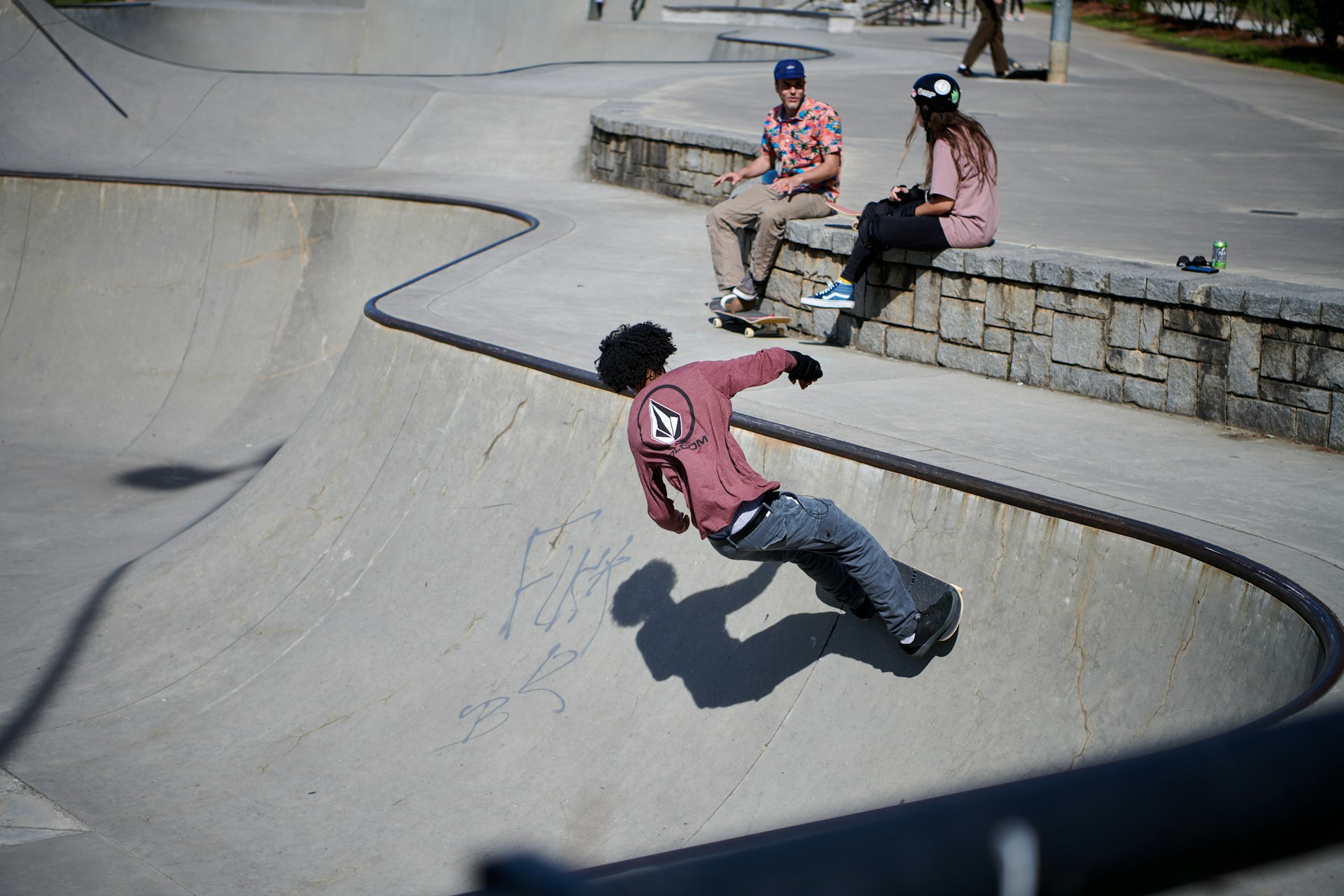
Hang out (or skate!) at the Historic Fourth Ward SkatePark
Take just a few more steps south on the trail to stumble upon the Historic Fourth Ward Park, on your right. Here, you’ll find skaters of all ages enjoying the city’s first designated skatepark. Adjacent to the park is a field for everyone to use. On any given day, you’ll see people working out, or simply hanging out, in this multipurpose urban oasis.
Grab a bite in the Inman Park neighborhood
Go under the Freedom Parkway underpass, which is lined with street art. On your right, you’ll see the BeltLine Marketplace, which is a couple of converted shipping containers that serve as incubators for new businesses. Once you’re on the other side of the underpass, look for the rhino sculpture on your left next to a sidewalk that will temporarily take you off the trail and deeper into the Inman Park neighborhood.
You’re now in one of Atlanta’s best neighborhoods for dining. This community has everything from coffee shops and wine tasting rooms to gastropubs and fine dining. Once you grab something to eat, you’ll have to retrace your steps to get back on the BeltLine and continue your stroll.

Stop to admire the street art
By now, you’ve seen plenty of street art along the way, but my favorite stretch of art is in the Reynoldstown/Cabbagetown neighborhoods near Krog Street tunnel. There’s a beautiful mix of graffiti and ever-changing murals inside the tunnel, as well as more permanent street art (and an Atlanta Tiny Door) on the MARTA train wall along Wylie Street. Look for the vibrant, open-mouth characters created by Atlanta artist Greg Mike – his murals are all over the city and loved by ATLiens.
The walk: Once you reach the intersection with Memorial Drive, you’ve officially walked the entire Eastside Trail! If you want to see more of the city’s, head west to go to Atlanta’s Grant Park neighborhood or head east to hang out in East Atlanta Village. Or explore more of the trail by crossing over Memorial Drive and continuing south to start your jaunt on the Southside Trail.
-

 Movie Reviews1 week ago
Movie Reviews1 week agoFilm Review: I Used To Be Funny offsets its humorously-adjacent title with a dark, heartbreaking temperament. – The AU Review
-

 World1 week ago
World1 week agoEconomy, migration: Voters' main concerns ahead of elections
-

 Politics1 week ago
Politics1 week agoTrump campaign accelerates vetting of potential running mates
-

 News1 week ago
News1 week agoWhat is D-Day? How the Normandy landings led to Germany’s defeat in World War II | CNN
-

 News1 week ago
News1 week agoWoman handcuffed in police car hit by freight train reaches $8.5M settlement
-

 Politics1 week ago
Politics1 week agoHunter Biden trial enters 3rd day with cross-examination of FBI agent
-
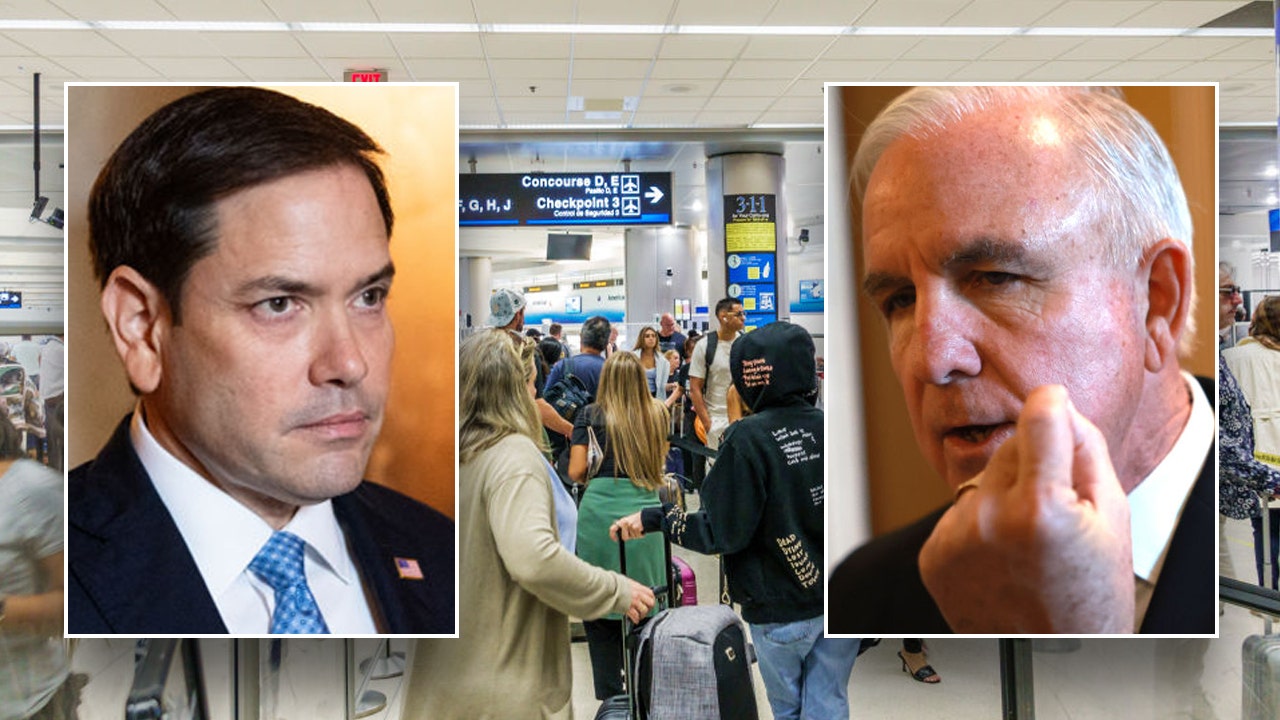
 Politics1 week ago
Politics1 week ago'It's absurd': Congress takes bipartisan action after Cuban officials' tour secure parts of major airport
-

 World1 week ago
World1 week agoFamine ‘likely’ already stalking northern Gaza: Report
